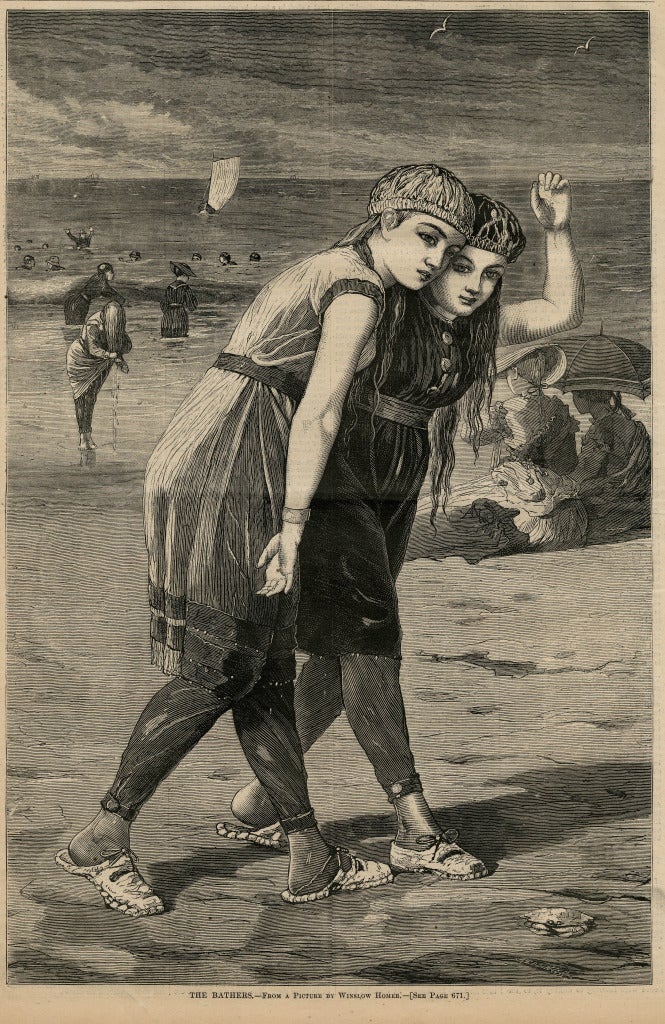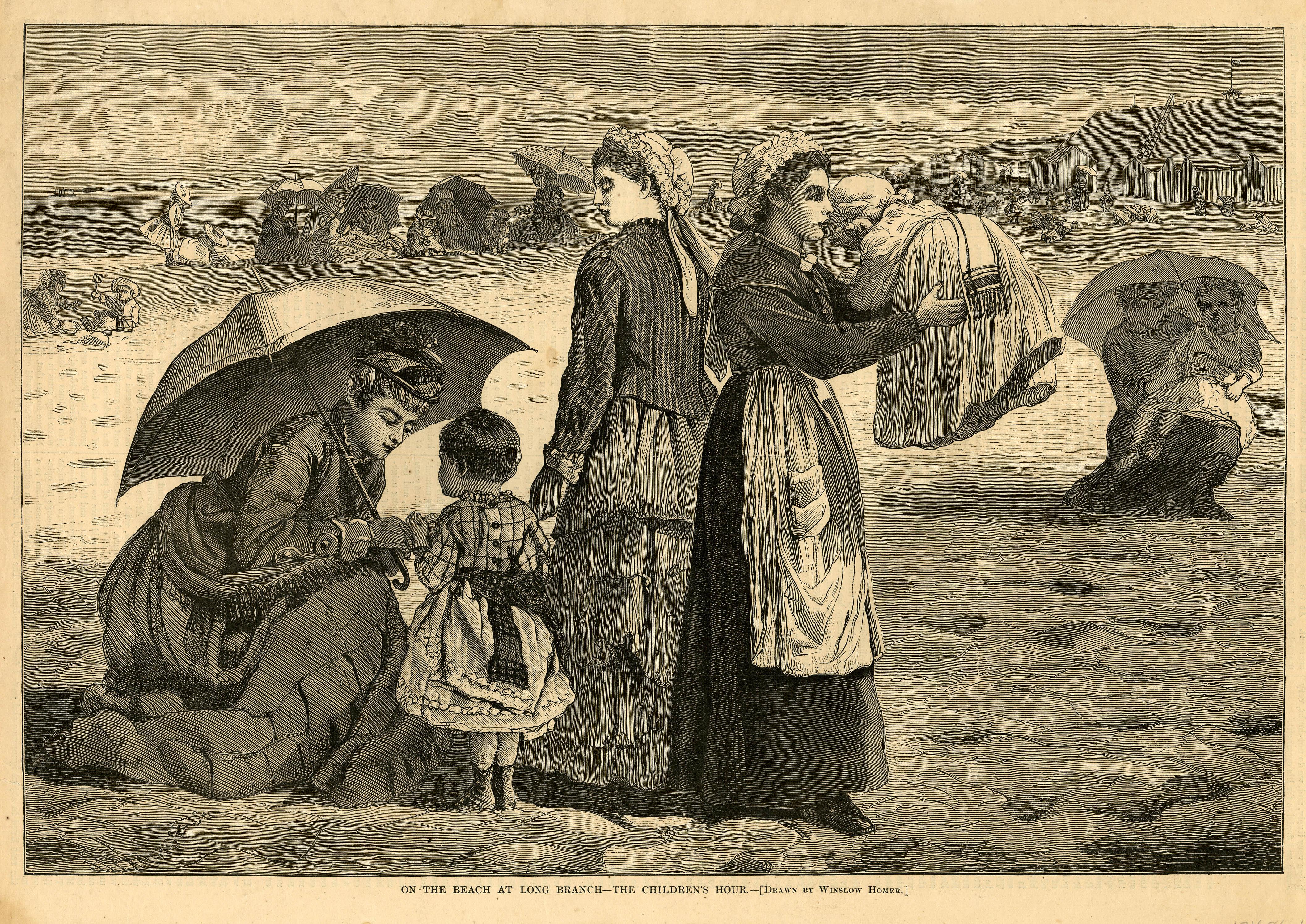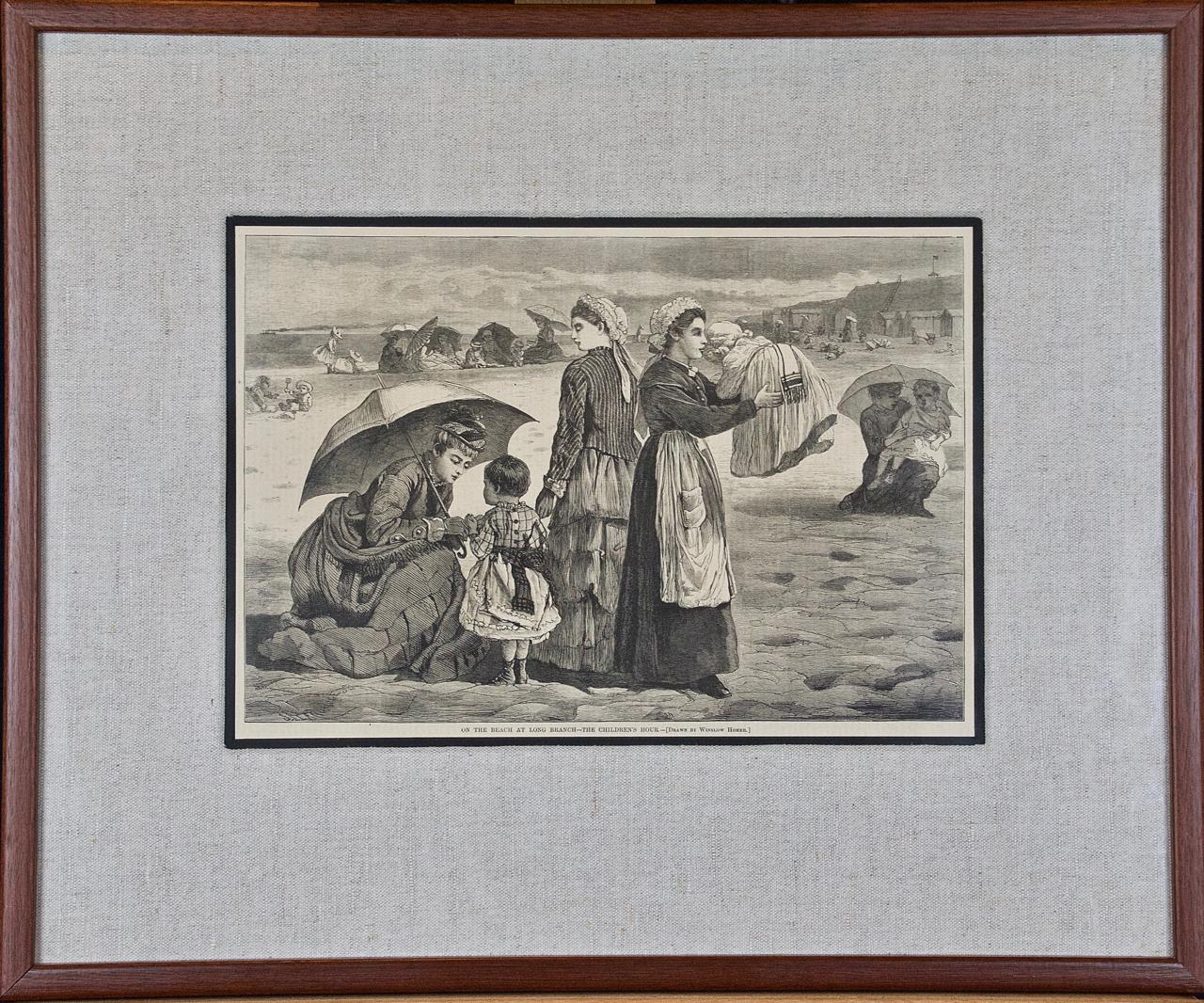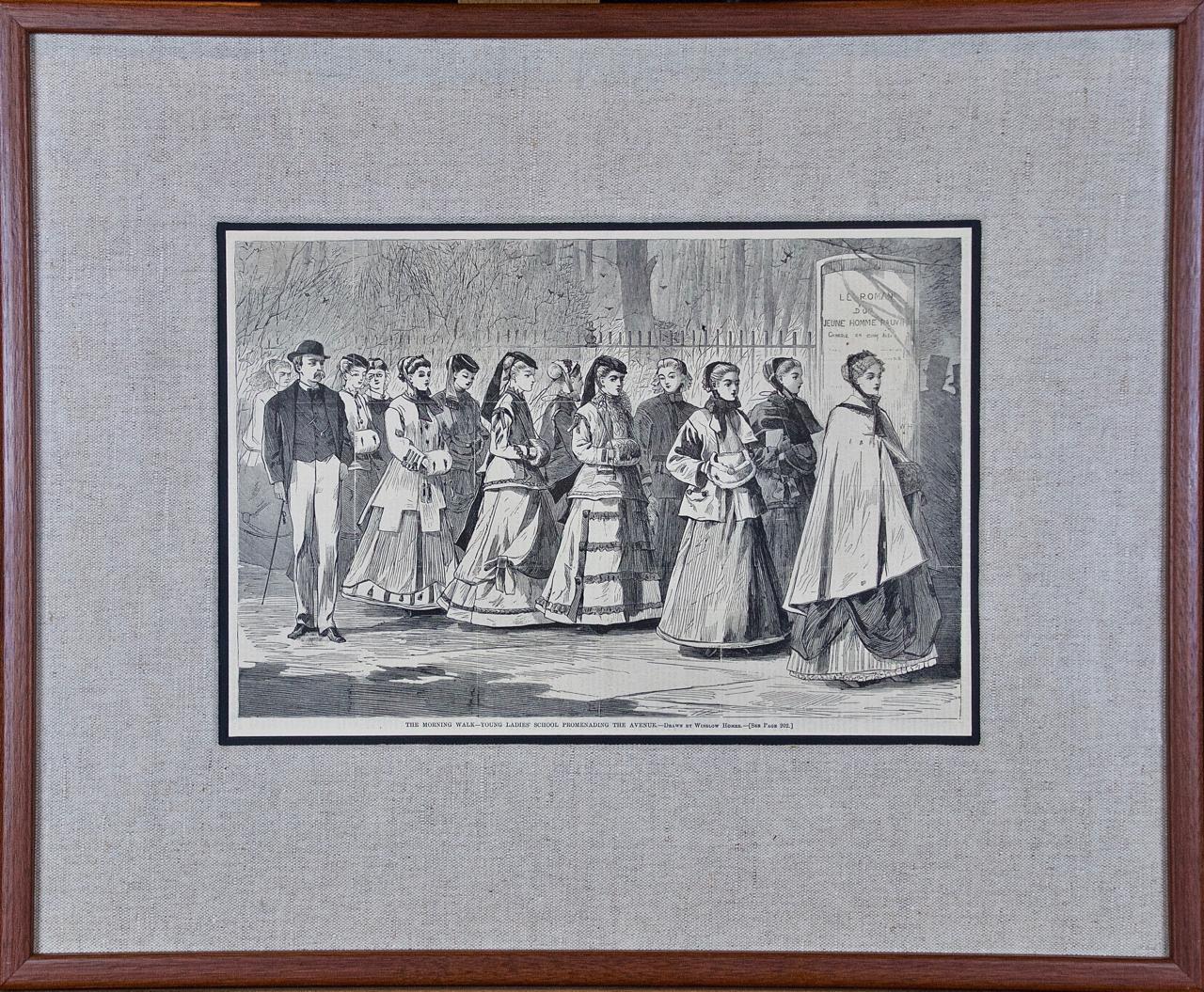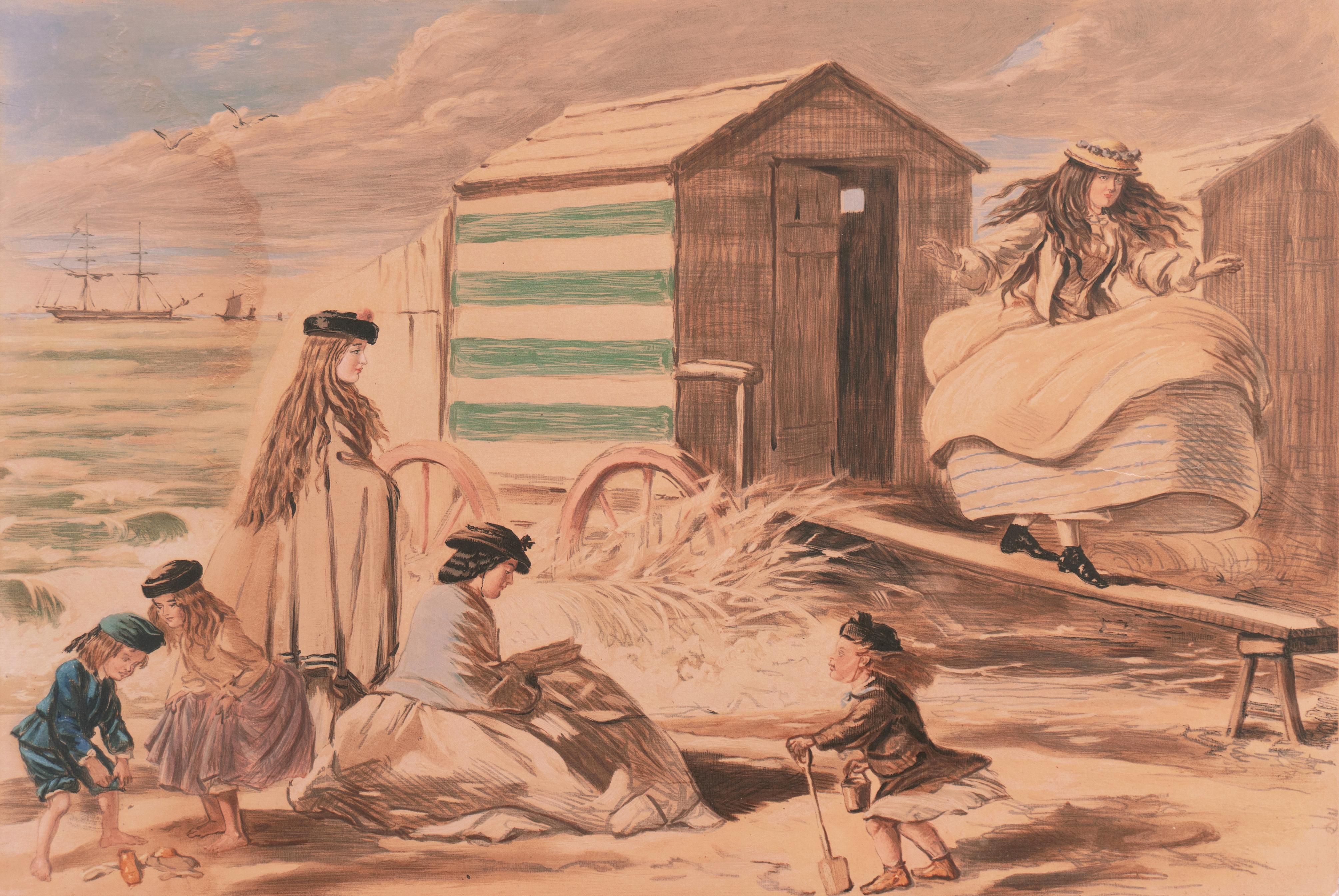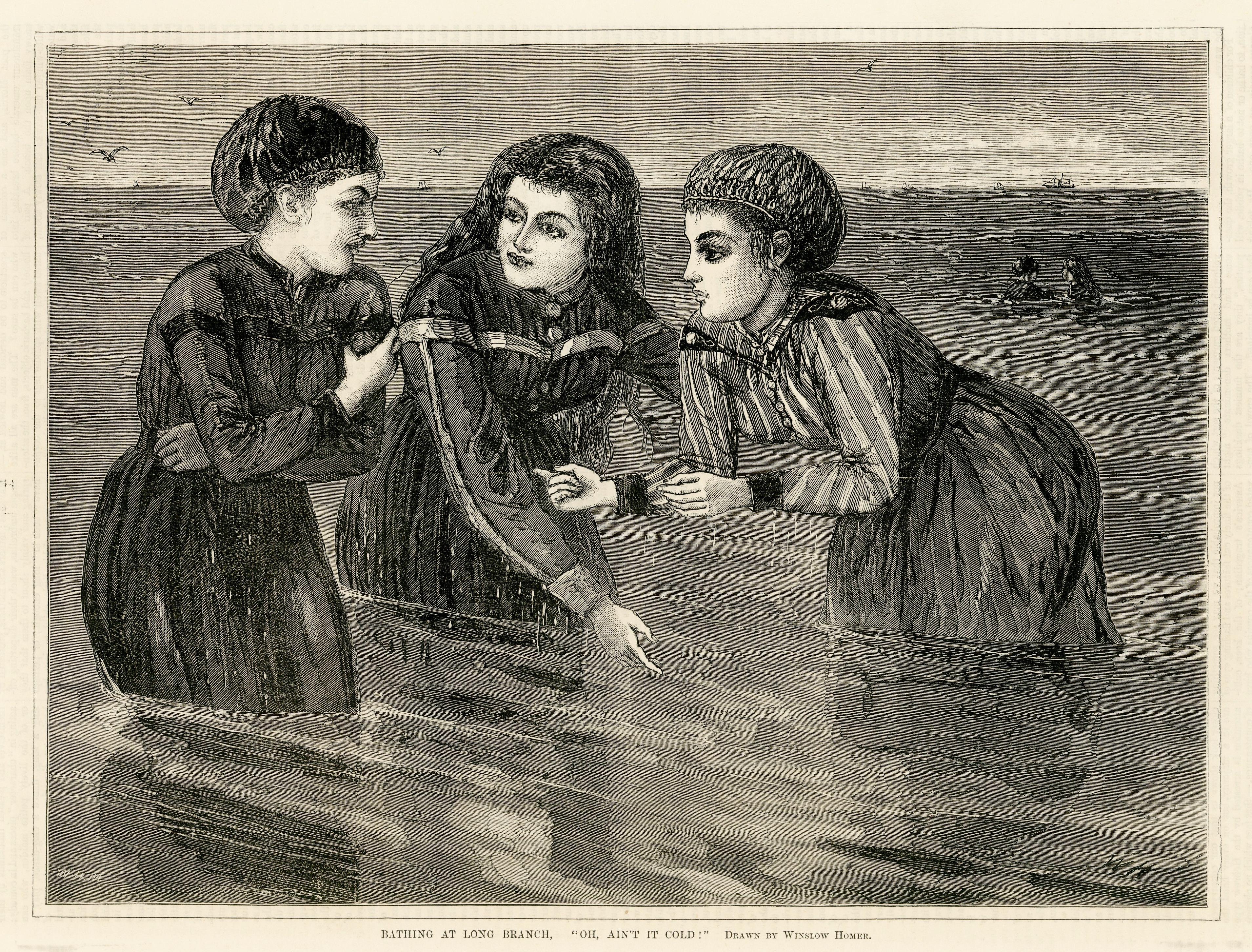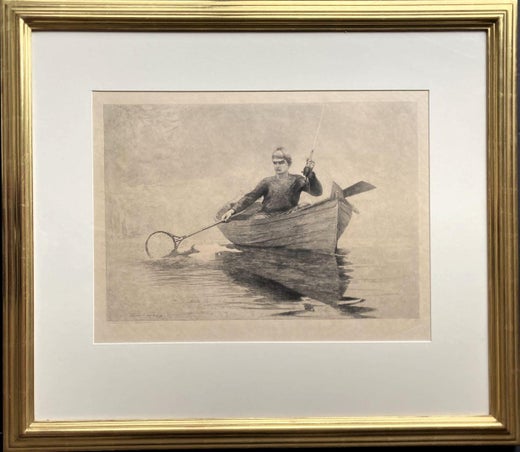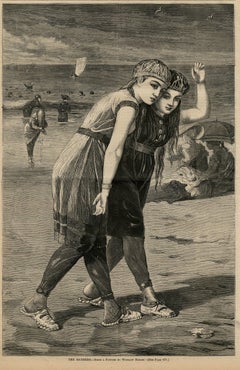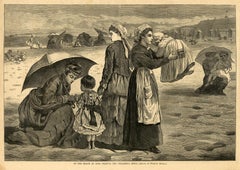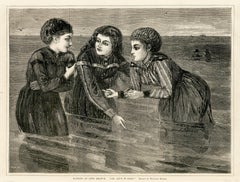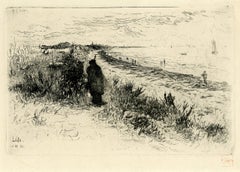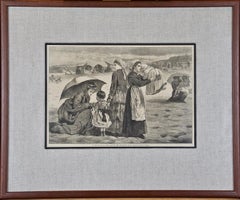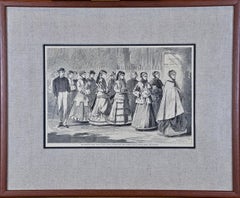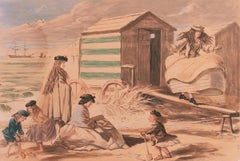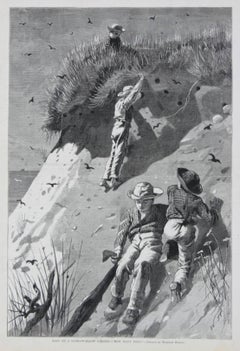Items Similar to The Beach at Long Branch
Want more images or videos?
Request additional images or videos from the seller
1 of 12
Winslow HomerThe Beach at Long Branch1869
1869
$2,200
£1,709.93
€1,936.11
CA$3,143.38
A$3,422.40
CHF 1,791.92
MX$41,080.16
NOK 22,615.14
SEK 21,205.54
DKK 14,458.17
About the Item
The Beach at Long Branch
Woodengraving, 1869
Signed in the block lower right "WH" ( see photo )
Published in Appleton’s Journal of Literature, Science and Art, August 21, 1869
Condition: Double page illustration, with centerfold. Tipped in binding. Very good condition. Displayed in a bird’s eye maple frame with French matting.
Image size: 15 1/2 x 21 7/16 inches
Frame size: 25 x 31
Reference: Goodrich 43
Beam 158
Kushner, Gallati & Ferber 65
Provenance: Donaldson, Lufkin & Jenerette Americana Collection
Credit Suisse, New York
- Creator:Winslow Homer (1836 - 1910, American)
- Creation Year:1869
- Dimensions:Height: 15.5 in (39.37 cm)Width: 21.44 in (54.46 cm)
- Medium:
- Movement & Style:
- Period:
- Condition:
- Gallery Location:Fairlawn, OH
- Reference Number:Seller: FA99521stDibs: LU14014912082
Winslow Homer
Winslow Homer (1836-1910) was an American landscape painter, printmaker and publication illustrator. He is considered one of the most important American artists of the 19th-century. Largely self-taught Homer initially worked as an illustrator for various publications, including: Harper's Weekly, Frank Leslie's Illustrated Newspaper and Ballou's Pictorial Magazine. He worked for Harper's during the Civil War, producing woodcut engravings depicting the personal experiences of soldiers. He later became a master of oil and watercolor painting, often focussing on maritime themes. Harper’s Weekly, published in New York, was an extremely popular publication in the nineteenth and early twentieth centuries. In weekly issues Harper’s reported the news, entertained with literature, poetry and art, as well as educating its readers about world affairs and new inventions. It's woodcut engraved illustrations and literature added to its popularity, employing major artists and authors of the time, including Winslow Homer, Charles Dickens, William Makepeace Thackeray and Thomas Nast.
About the Seller
5.0
Recognized Seller
These prestigious sellers are industry leaders and represent the highest echelon for item quality and design.
Gold Seller
Premium sellers maintaining a 4.3+ rating and 24-hour response times
Established in 1978
1stDibs seller since 2013
822 sales on 1stDibs
Typical response time: <1 hour
Associations
International Fine Print Dealers Association
- ShippingRetrieving quote...Shipping from: Fairlawn, OH
- Return Policy
More From This Seller
View AllThe Bathers
By Winslow Homer
Located in Fairlawn, OH
The Bathers
Woodengraving, 1873
As published in Harper's Weekly, August 2, 1873 (p. 668)
Provenance:
Wunderlich & Co., Inc., New York, NY (Their stock no. 84.003.8 in pencil recto a...
Category
1870s American Realist Figurative Prints
Materials
Woodcut
On the Beach at Long Branch - The Children's Hour
By Winslow Homer
Located in Fairlawn, OH
On the Beach at Long Branch - The Children's Hour
Wood engraving, 1874
Published in "Harper's Weekly" August 15, 1874 (p. 672)
Image size: 9 1/4 x 13 5/8 inches
Provenance: Wunderlic...
Category
1870s Hudson River School Figurative Prints
Materials
Woodcut
Bathing at Long Branch-“Oh, Ain’t it Cold”
By Winslow Homer
Located in Fairlawn, OH
Bathing at Long Branch-“Oh, Ain’t it Cold”
Wood engraving, 1871
Signed in the block with the artist's initials "WH", see photo
Published in: Every Saturday, Aug. 16, 1871
Condition: ...
Category
1870s Hudson River School Figurative Prints
Materials
Woodcut
Lido (Venice)
By Otto Henry Bacher
Located in Fairlawn, OH
Lido (Venice)
Etching on chine collee, 1880
Part of the artist's "Venice Set"
Signed upper right in plate :Otto H Bacher" (see photo)
Signed with the estate stamp, Lugt 2002 recto lower right beneath image. (see photo)
Created October 20, 1880
Reference: Andrew Venice No. 29
Provenance: Estate of the Artist
Otto H. Bacher (1856-1909)
Otto Henry Bacher was born in Cleveland, Ohio, to a family of German descent. He first studied art at the age of sixteen with local genre trompe l'oeil still-life artist, DeScott Evans. Although he studied with Evans for less than one year, Bacher's early work, comprised mainly of still lifes, betrays Evans's influence. After a short period in Philadelphia, where he studied at the Pennsylvania Academy of the Fine Arts, Bacher returned to Cleveland and met Willis Seaver Adams, an artist from Springfield, Massachusetts, who had just recently arrived upon the Cleveland art scene. Soon the two artists were rooming together. Adams was instrumental in the founding of the Cleveland Art Club, as well as the establishment of the Cleveland Academy of the Fine Arts, to the board of which Adams had Bacher appointed. Also during this time, Bacher began to learn the process of etching from local etcher and landscape painter Sion Longley Wenban.
In 1878, Bacher and Adams left for Europe. After stopping briefly in Scotland, Bacher went on to Munich, where he enrolled at the Royal Academy. He quickly tired of the rigors of the academy, and soon he was studying with Cincinnati artist Frank Duveneck, the prime American exponent of the Munich School. In 1879, Bacher made a trip to Florence with Duveneck as one of the celebrated "Duveneck Boys." Early the following year, the group proceeded to Venice, where Bacher and several other artists established studios in the Casa Jankovitz.
By this time an avid printmaker, Bacher had his etching press sent from Muni ch, and it was in his Venice studio that he taught Duveneck the rudiments of etching. Soon Bacher, Duveneck, and other members of the Duveneck circle were experimenting in printmaking. Among the group's contributions were some of the first American examples of monotypes, which they called "Bachertypes" because they were printed using Bacher's press.
It was also in Venice that Bacher met the venerable American expatriate artist, James McNeill Whistler. On learning of Bacher's press and his collection of etchings by Rembrandt, Whistler made himself a regular visitor to Bacher's studio, and he eventually took his own room in the Casa Jankovitz. Bacher spent much of the rest of 1880 with Whistler, the two artists sharing etching techniques. From Whistler, Bacher learned tone and line graduation; from Bacher, Whistler learned his etching techniques, including better ways of using the acid bath which produced less tedious and more efficient work. Bacher visited Whistler occasionally in the years that followed, and in 1908 he published With Whistler in Venice, his famous recollections of his time with the great artist.
Bacher spent the next two years traveling extensively throughout Italy, with Venice as the center of his operations, and he produced a number of important etchings of Italian subjects. Bacher sent several of these works to America in 1881 to be included in the Society of American artists exhibition that year, and had a similar group of works shown at the Royal Society of Painter-Etchers' first exhibition at the Hanover Gallery in London. Following the exhibition, Bacher, along with several other of the American contributors, was elected a Fellow of the Society. Bacher collected twelve of his etchings of Venetian subjects and sold them in bound volumes through his New York dealer, Frederick Keppel.
Bacher returned to Cleveland in January 1883 as a fully cosmopolitan artist. He set up a lavish studio furnished with exotic items and objets-d'art he had collected on his travels, and began to hold art classes as a means to supplement his income. He soon joined with Joseph De Camp in forming a summer sketch class in Richfield, Ohio. Bacher and De Camp also planned the Cleveland Room for a major loan exhibition in Detroit that year. During this period, Bacher increasingly painted in oil, and he began to produce sun-dappled canvases in an impressionistic mode.
Unable to sell any paintings from this early period, however, Bacher left Cleveland for Paris in 1885, where he planned to undertake further studies. Stopping first in London to visit Whistler, Bacher stayed only briefly in Paris before heading to Venice, where he spent the remainder of the year. In January 1886, Bacher returned to Paris and enrolled at the Académie Julian, and also entered the atelier of Emile-Auguste Carolus-Duran. The life of the student seems never to have suited Bacher, as he stayed in Paris only through June, before departing again for Venice. For the next six months he, Robert Blum, and Charles Ulrich...
Category
1880s American Impressionist Prints and Multiples
Materials
Etching
Au bord de la mer (At the Sea Side)
By James Jacques Joseph Tissot
Located in Fairlawn, OH
Au bord de la mer (At the Sea Side)
Etching and drypoint, 1880
Signed in the plate middle left edge (see photo)
Edition: c. 100
A very rich impression, full of burr and contrasts
Pri...
Category
1880s Impressionist Figurative Prints
Materials
Etching
New England Coast (Greenport, New York)
By Stow Wengenroth
Located in Fairlawn, OH
New England Coast (Greenport, New York)
Lithograph, 1969
Signed in pencil lower right (see photo)
Edition: 350
Published in the book, Stow Wengenroth's New York, 1969
Limited slipcas...
Category
1960s American Realist Landscape Prints
Materials
Lithograph
You May Also Like
Winslow Homer Framed Original 19th Century Wood Engraving "On the Beach"
By Winslow Homer
Located in Alamo, CA
This Winslow Homer wood engraving entitled "On the Beach at Long Branch, The Children's Hour", was published in Harper's Weekly in the August 15, 1874 ed...
Category
1770s American Impressionist Landscape Prints
Materials
Engraving
$780 Sale Price
20% Off
Winslow Homer 19th Century Woodcut Engraving "The Morning Walk"
By Winslow Homer
Located in Alamo, CA
This Winslow Homer woodcut engraving entitled "The Morning Walk, Young Ladies' School Promenading the Avenue", was published in Harper's Weekly in the...
Category
1870s American Impressionist Landscape Prints
Materials
Engraving, Woodcut
$700 Sale Price
20% Off
'At the Beach, Scene at Sandbath', Punch Magazine, Thomas Agnew, Victoriana
Located in Santa Cruz, CA
Signed lower left, outside of design, 'John Leech' (British, 1817-1864) and created circa 1865. Titled verso, 'Scenes at Sandbath', and inscribed, 'The female Blondin out done! Grand...
Category
1860s Figurative Prints
Materials
Paper, Cardboard, Lithograph
Raid on a Sand-Swallow Colony How Many Eggs? After Winslow Homer wood engraving
By Winslow Homer
Located in Paonia, CO
Raid On A Sand-Swallow Colony " How Many Eggs?" is an original wood engraving from Harper’s Weekly June 13, 1874 in very good condition.
One of Am...
Category
1870s Figurative Prints
Materials
Woodcut
The Swimmers on the Beach- Original Drawing by Alfred Grévin - Late 19th century
By Alfred Grevin
Located in Roma, IT
The Swimmers on the Beach is an original drawing in pencil realized by Alfred Grévin in the Late-19 Century.
Hand signed in pencil on the lower right margin. All around an inscrip...
Category
Late 19th Century Modern Figurative Drawings and Watercolors
Materials
Pencil
Walking Along the Beach, Bauer, German School, 19th Century, Signed P. Bauer
Located in Knokke, BE
Walking Along the Beach
German School
19th Century
Signature: Signed bottom right P. Bauer
Dimensions: Image size 31 x 24 cm, frame size 42 x 32 cm
Medium: Aquarelle
Category
19th Century Romantic Portrait Paintings
Materials
Watercolor
More Ways To Browse
Antique Maple Frames
Vintage Mermaid Poster
Vintage Winnie The Pooh Prints
Vivian Springford
Warhol Dollar Signs
Warhol Trial Proof
1970s Printed Mirror
Al Pounders
Alberto Giacometti On Sale
Allison Lefcort On Sale
American Psycho
Ayako Rokkaku
Bassano Plates
Basya Wuensch Reiter
Calder Santa Claus
Camille Pissarro Signed
Carlos Merida Silkscreens
Carlos Schwabe
